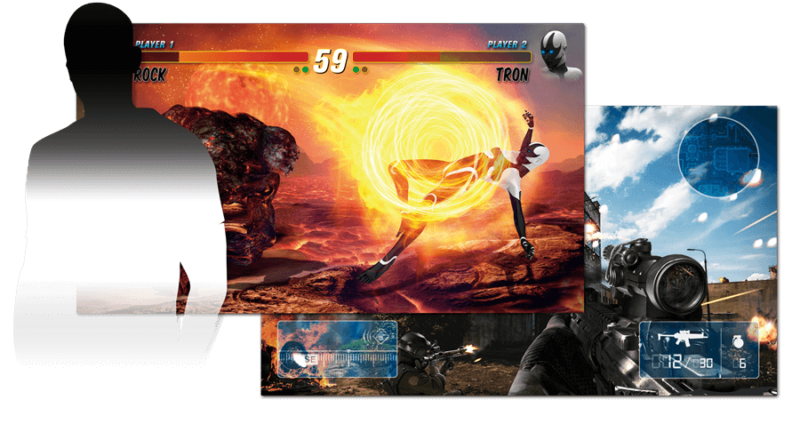BenQ ZOWIE RL2455 24-Inch Monitor Review
John Williamson / 8 years ago
End User Testing

1080P Video
Despite targeting the hardcore gaming audience, the monitor is suitable for playing movies and other high-definition content. When viewing any kind of 1080P video, the panel manages to uphold a good, immersive experience providing you’re not expecting to see nuances in the colour output commonplace on an IPS monitor. Even though the display uses TN technology, it doesn’t make the videos look washed out or lacking in definition by a huge degree. Also, the movement is perfectly fluid and I didn’t detect any ghosting as the action became more frantic.
Uncalibrated
The out-of-the-box performance is pretty decent for a TN panel without a proper setup. During testing, the product managed 98% sRGB and 76% AdobeRGB coverage which is within the range I anticipated. The product’s colour accuracy has room for improvement but it’s far from being terrible. The Delta-E values range between 1.65-8.14 with an average of 4.69. This demonstrates the colour output is very inconsistent and varies dramatically based on the different hues. Similarly, the tone response is poor and the monitor didn’t fare very well in this particular area.
On a more positive note, the colour uniformity remained impressive across the display’s entire segments at varying brightness settings. More specifically, the quadrant colours were close to the Delta-E and I couldn’t find any particular weak point. The luminance uniformity is to be commended at the highest differentiation I experienced was 4% at 100% brightness and 9% when using 50% brightness. Additionally, the contrast ratio was exemplary between 0-100% brightness which combines rather nicely with the fantastic White Point results.
Calibrated
Once calibrated, the BenQ ZOWIE RL2455 obtained 99% sRGB coverage and retained the same 76% AdobeRGB figure. While the tonal response did improve slightly after calibration, it’s still quite a mediocre measurement. Thankfully, the calibrated colour accuracy was a vast improvement and the Delta-E lab numbers fell within a narrower 0.60-5.64 range. This equates to a 2.85 average. Next up is the colour uniformity which didn’t change too much although the closest Delta-E figures dropped in a number of quadrants. The luminance uniformity post-calibration was pretty similar apart from a few minor changes here and there. The contrast levels at higher brightness settings increased from 710:1 to 720:1 while the 0% result dropped from 17310:1 to 17090:1. Furthermore, the White Point at 25% shot up from 6400 to 6500.
Sound
As expected, the monitor’s audio hardware is extremely basic and exhibits a flat response with a dull, lifeless tone. Honestly, the speakers are rather timid and the noise output isn’t great. It’s possible to use the integrated speakers but only as a last resort. It’s terrible for competitive gaming and you should employ a premium headset or a good pair of headphones instead. Perhaps a soundbar would be a good addition to greatly enhance the audio fidelity. Of course, the product’s small size doesn’t have much room to incorporate good speakers and a subwoofer so I’m not disappointed in the slightest. However, the audio is certainly worse than I’ve experienced on larger 27-inch models. Saying that, the larger size makes it easier to include better speakers so this is probably an unfair comparison.
Game Testing
Typically, I test the gaming performance through a number of PC titles like Crysis 3, The Witcher 3 and other iconic releases. However, this seemed a poor strategy because the monitor isn’t really aimed towards PC players as reflected in the 60Hz refresh rate. Therefore, I decided to hook up my Wii U and PlayStation 4 to analyse the monitor’s gaming experience for its intended market. Throughout the testing stage, the image quality was excellent and the superb response time resulted in very low input lag. This was such as useful asset when playing multiplayer titles which gave me a slight boost compared to an LG 32LG3000. Not only that, the higher PPI rate made the textures appear sharper and add a better level of visual clarity. To be clear, the picture quality isn’t groundbreaking and I noticed some murkiness in small, background elements. The real benefit stems from the panel’s 1ms response time which provides you with the tools to react better and become more competitive. While I’m not anywhere near a professional standard in games like Overwatch, I felt there was a noticeable improvement when switching to the monitor.



















